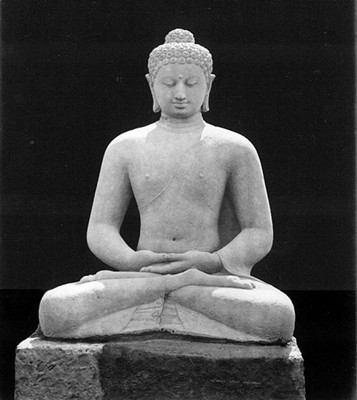(单词翻译:单击)
It's morning in Battersea Park in London, and I'm standing near the river, next to the Peace Pagoda. Every day, watched by four gilded Buddha statues, a Japanese Buddhist monk drums his way over the grass. His name is the Reverend Gyoro Nagase, and he knows these gilded Buddhas very well. But then so, in a sense, do we all: here, looking out over the Thames, is the Buddha sitting cross-legged, his hands touching in front of his chest. I hardly need to describe the figure any further, because the seated Buddha is one of the most familiar and most enduring images in world religion.
这是位于伦敦泰晤士河南岸巴特西公园的一个早晨,我正倚河而立,这听起来不像是会邂逅佛陀的地方。但正是在这里的和平宝塔一侧,一位来自日本的长濑法师每天都会敲着木鱼在4尊金佛像的注视下穿过草坪。法师对这几尊佛像极为熟悉。从某种意义上说,每个伦敦人都很熟悉。从泰晤士河看过去,佛像盘坐双手置于胸前。无须过多描述,因为坐佛是世界宗教史上最著名,历史也最悠久的造型之一。
Today you can find statues of the Buddha-seated and serene-all over the world, but it hasn't always been like this. The Buddha has not always been there for us to contemplate. For centuries he was represented only through a set of symbols. The story of how this changed, and how the Buddha came to be shown in human form, begins in Pakistan around 1,800 years ago.
如今,在全世界都能找到宝相庄严的佛陀坐像,但起初,并非此番光景。佛陀其实并没有供人瞻仰的具体形象,几百年间都只能通过一些象征物来表现。佛陀以人类的形象示人,始于一千八百年前的巴基斯坦。


